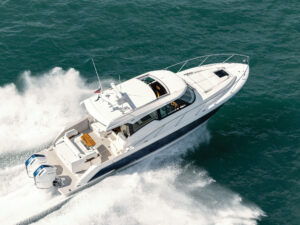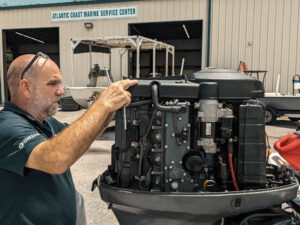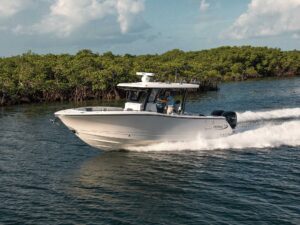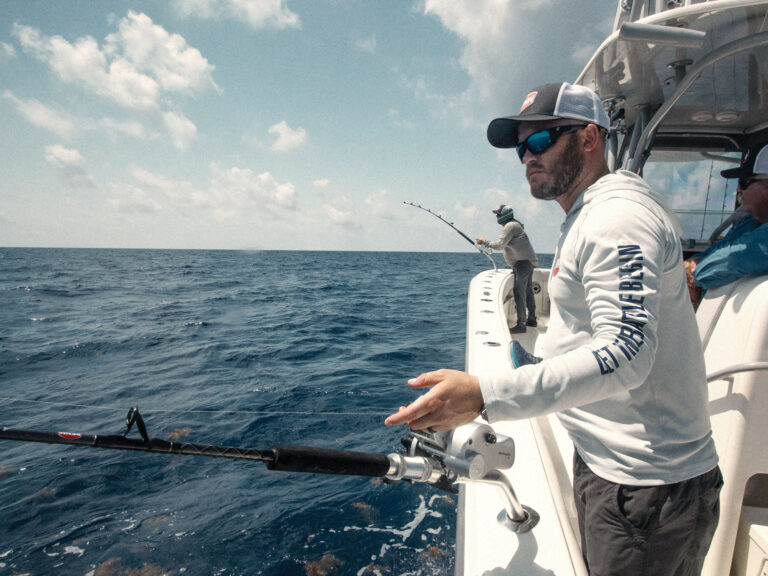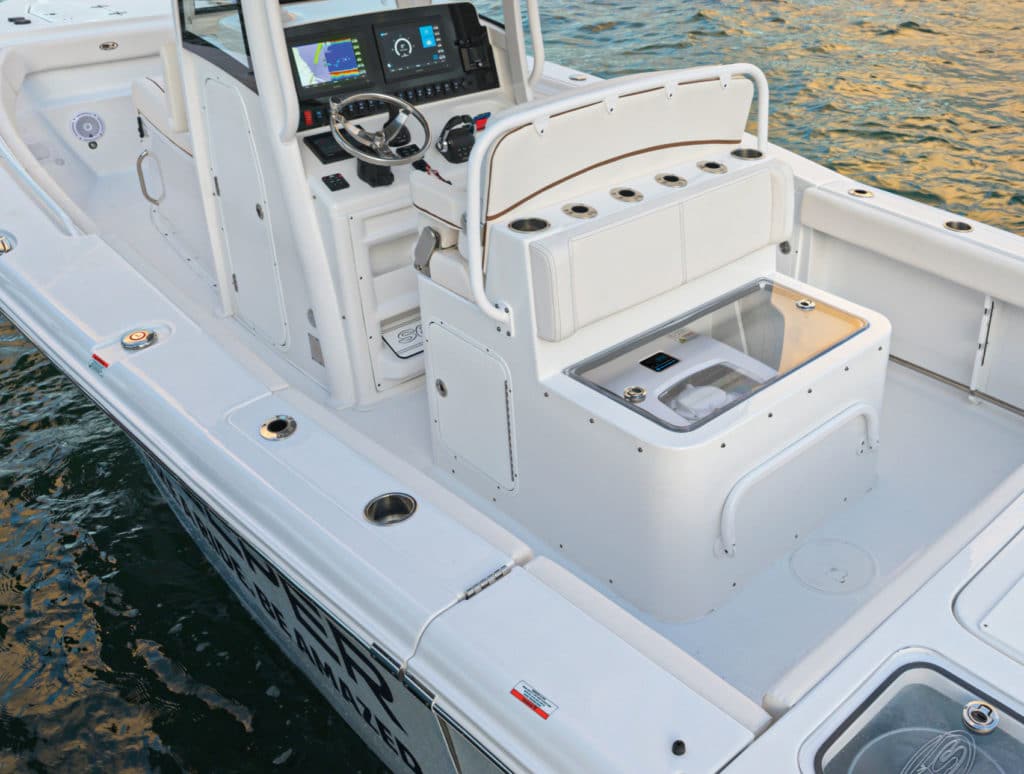
Cruising, trolling and drifting, even at anchor, causes seasickness to creep up on many anglers in choppy conditions or big seas. Dramamine and similar drugs avert the nausea, but often cause drowsiness and other side effects. Specialty wristbands, another common remedy, don’t seem to work for everyone. But marine gyroscopic stabilizers put an end to the rolling and tilting that causes the mal de mer that hinders the fishing and damages the stricken’s offshore cred.
Gyro technology has been utilized by large oceangoing vessels to stabilize the ride for some time, and it finally found its way into the recreational boat industry in recent years. Just two years ago, Seakeeper, a leading manufacturer of gyroscopic stabilizers for the recreational sector, introduced its Seakeeper 2, designed for boats as small as 27 feet. At the 2020 Miami International Boat Show in February, the company unveiled the Seakeeper 1, a compact model for even smaller boats.
Here’s how gyrostabilizers work: Inside a vacuum-sealed aluminum sphere, a heavy flywheel spins up to 9,750 rpm. The encapsulated apparatus pivots fore and aft, and the subsequent gyroscopic torque significantly offsets the rolling motion of the boat, so it becomes neutrally buoyant. This effect is more pronounced on boats with greater deadrise and narrower beams.
“There are three main movements: pitch, which is tilting front to back or bow to stern; yaw, a turning rotation on the boat’s vertical axis; and roll, which is the side-to-side or port-to-starboard motion that Seakeeper mitigates,” says Kelsey Albina, Seakeeper’s communication manager.
Gyrostabilizers can be installed anywhere space allows, typically in an interior compartment, inside the console, or inside the leaning post. In limited applications, more than two units can be mounted to attain the same benefit.
“The Seakeeper first needs to spool up, and the bigger the flywheel, the longer it takes,” Albina says. “So, typically, you turn the gyrostabilizer on as soon as you get the boat in the water, then load your gear, park the trailer and, by the time you get through the no-wake zone, it’s ready to go. To power off, you simply lock the brake arm so it won’t exert force, and eventually the flywheel spools down.”
The smaller units run on 12-volt DC (typically a dedicated battery) and consume as little as 55 amps. A coolant mixture of glycol and seawater dissipates heat in the sphere. Noise is minimal, and maintenance includes freshwater rinsing and changing coolants regularly. Larger units also require periodic zinc replacement.
Albina says 75 percent of Seakeepers are included among new boat options, while 25 percent are retrofits. Because of strict structural requirements, Seakeeper units can only be installed by factory-trained dealers. Luckily, the company has an extensive US and global service network.
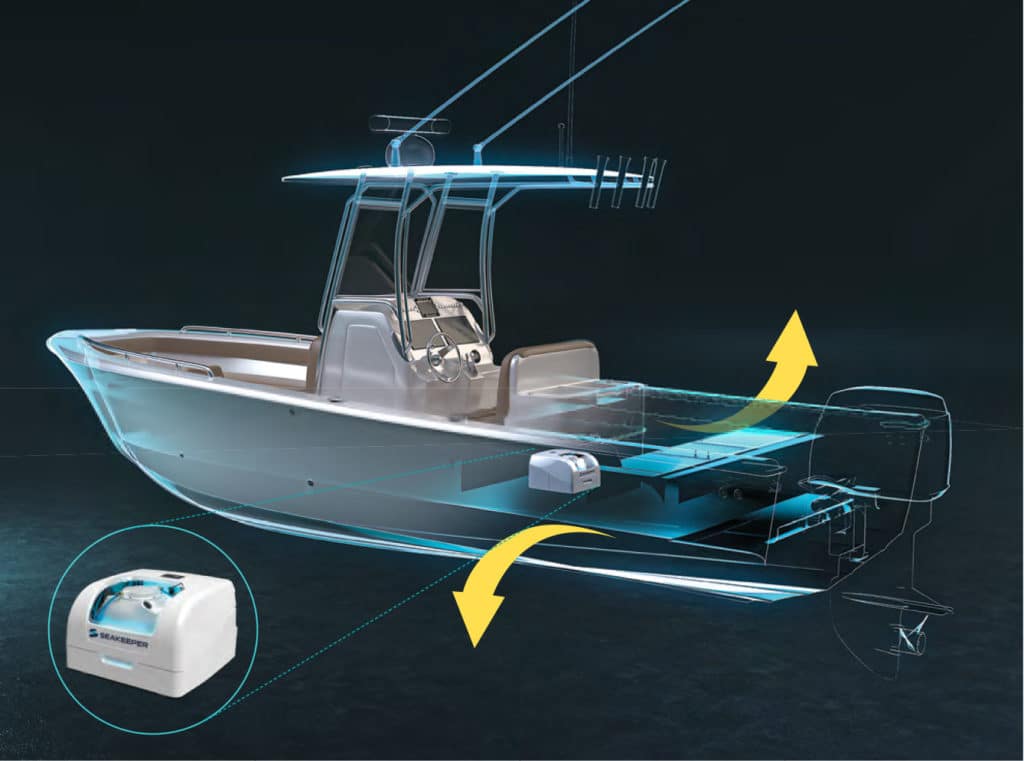
The Seakeeper 1 is a flush-mount unit that can be installed virtually anywhere aboard boats ranging in size from 30 to less than 23 feet. It weighs 365 pounds, runs on 12-volt DC and has no outside appendages. The flywheel spools up to stabilization speeds in just 15 minutes.
While the latest Seakeeper is impressive, owners of earlier models also give their respective units rave reviews.
“We’ve had a Seakeeper 5 installed in a salon deck on the centerline hatch of my Cabo 38 Express for a few months now, and it’s incredible,” says owner Ed Lajoy, who keeps the boat in the East Cape region of Baja, Mexico, to fish for marlin, tuna and dorado in the Sea of Cortez.
“I have two kids, and my oldest son never felt great offshore. He was always nauseous and uncomfortable,” Lajoy says. “But we went out last fall, when it was blowing 15 to 20 knots, and he didn’t have a problem, even when we fished the troughs. Our captain, who is up in the tuna tower all day, is less fatigued with the reduced movement. And the Seakeeper is super-intuitive to operate too.”
Fred Cardet had his local dealer install a Seakeeper 3 on his Contender 35ST a year after taking delivery of the boat, which he uses to target swordfish and deep-drop 60-plus miles off Destin, Florida.
“My wife, my friends and everyone who comes aboard loves it,” he explains. “Whether drifting or stopped, you don’t have to fight to keep your balance. It’s amazing.”
Capt. Ryan Van Fleet runs fishing charters in the upper Florida Keys, where he slow-trolls live baits, and also anchors to target grouper and snapper aboard his Sailfish 2360. He had a Seakeeper 2 retrofitted inside the boat’s cuddy cabin.
“It was well worth the investment,” Van Fleet claims. “The gyro doesn’t cure hangovers, but it really cuts down on the time it takes my charter clients to get acclimated, and now only a small percentage of my anglers get seasick, compared to before.”
Van Fleet also enjoys the benefits of suffering fewer aches and pains after spending long days on the water. “With up to 95 percent roll reduction, the added level of comfort is fantastic,” he says. “For guys like me, who make a living on the water, Seakeeper will definitely extend their career.”

